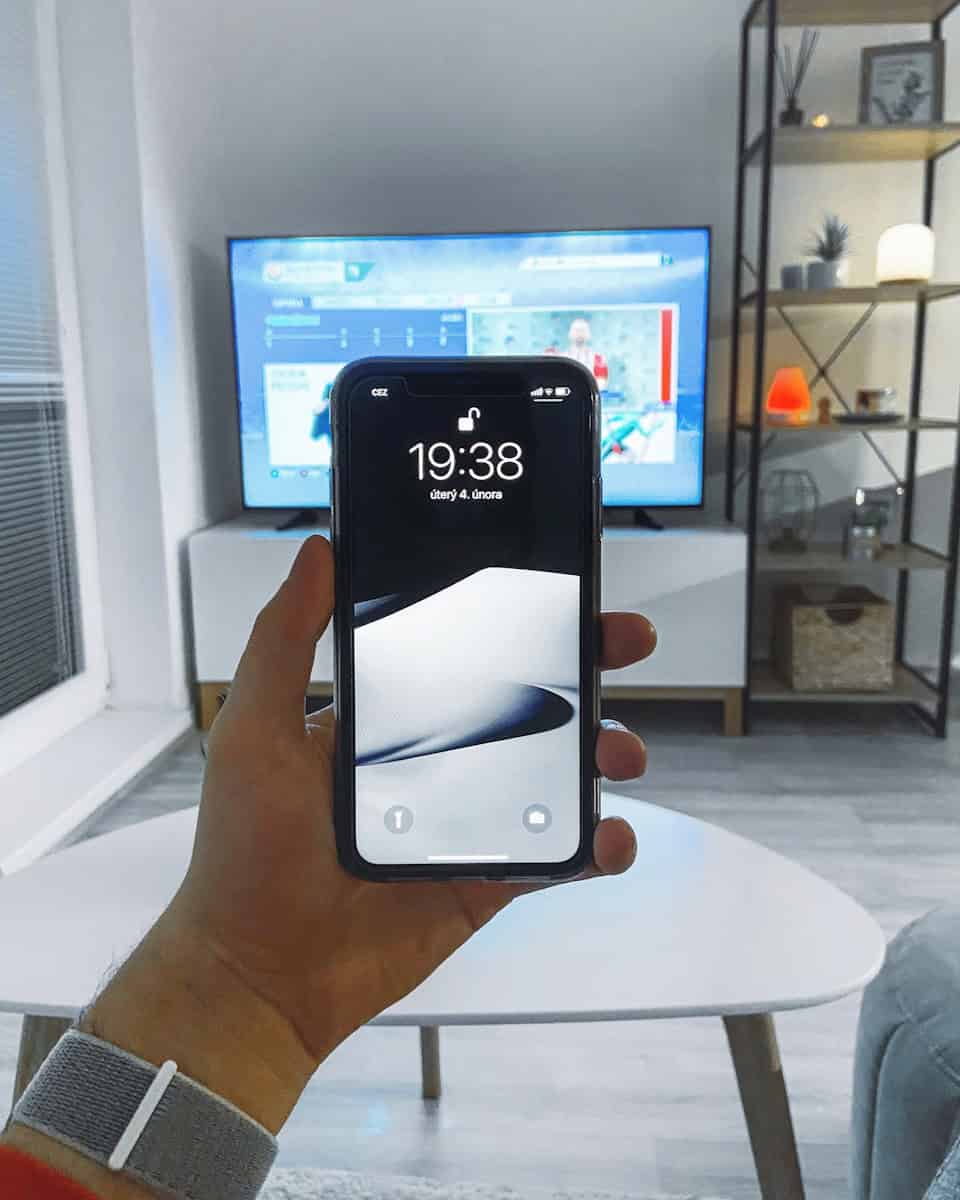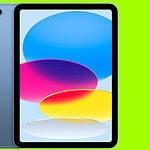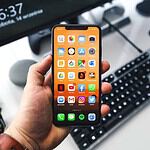Screen mirroring your iPhone to a TV opens up a world of possibilities for viewing content on a larger display. You can easily share photos, videos, and apps from your iPhone on your TV screen using AirPlay or other mirroring methods. This feature is great for watching movies, giving presentations, or playing games on a bigger screen.
Setting up screen mirroring is quick and simple. Most modern smart TVs support AirPlay, making the process seamless. If your TV doesn’t have AirPlay, you can use alternatives like an HDMI adapter or third-party apps. The key is to connect your iPhone to the same Wi-Fi network as your TV.
Once connected, you can mirror your entire iPhone screen or just stream specific content. This flexibility lets you choose what to share while keeping other information private. Whether you’re hosting a party or enjoying a quiet movie night, screen mirroring enhances your viewing experience.
| Mirroring Method | Compatibility | Setup Difficulty |
|---|---|---|
| AirPlay | Apple TV, Smart TVs | Easy |
| HDMI Adapter | Any TV with HDMI | Medium |
| Third-party Apps | Various TVs | Medium to Hard |
Mirroring Your iPhone to Your TV (Without Apple TV)
You can easily share your iPhone’s screen on your TV and enjoy photos, videos, and games on a larger display even if you don’t own an Apple TV. Here are a few methods to mirror your iPhone without relying on Apple’s set-top box:
1. AirPlay 2-Compatible Smart TVs
Many newer Smart TVs from brands like Samsung, LG, Sony, and Vizio support AirPlay 2, Apple’s wireless streaming technology.
- Check for Compatibility: Look for the AirPlay 2 logo or check your TV’s specifications to confirm compatibility.
- Connect to the Same Wi-Fi: Ensure your iPhone and TV are connected to the same Wi-Fi network.
- Open Control Center: Swipe down from the top-right corner of your iPhone’s screen to open Control Center.
- Tap Screen Mirroring: Select your TV from the list of available devices.
- Enter Passcode (if prompted): If this is your first time connecting, you might need to enter a passcode displayed on your TV into your iPhone.
2. Lightning Digital AV Adapter and HDMI Cable
This method requires a Lightning Digital AV Adapter (available from Apple) and an HDMI cable.
- Connect the Adapter: Plug the Lightning Digital AV Adapter into your iPhone’s charging port.
- Connect to TV: Connect one end of the HDMI cable to the adapter and the other end to an available HDMI port on your TV.
- Select Input: Use your TV remote to switch to the HDMI input corresponding to the port you used.
3. Third-Party Screen Mirroring Apps
Several third-party apps offer screen mirroring capabilities. These apps often require both your iPhone and TV to be connected to the same Wi-Fi network.
- Popular Options: Consider apps like Reflector 4, ApowerMirror, or LetsView.
- Installation: Download the app on your iPhone and install the corresponding receiver software or app on your Smart TV or streaming device (if required).
- Follow App Instructions: Each app has specific instructions for connecting and mirroring your iPhone.
4. Chromecast
If you have a Chromecast connected to your TV, you can mirror certain content from your iPhone using compatible apps.
- Supported Apps: Many popular apps like YouTube, Netflix, and some games support Chromecast.
- Open the App: Open the app you want to cast from on your iPhone.
- Tap the Cast Icon: Look for the Chromecast icon (it looks like a rectangle with a Wi-Fi signal in the corner) within the app.
- Select Your Chromecast: Choose your Chromecast device from the list.
| Method | Requirements | Pros | Cons |
|---|---|---|---|
| AirPlay 2 | AirPlay 2-compatible TV, Wi-Fi network | Wireless, easy setup | Limited TV compatibility |
| Adapter + HDMI | Lightning Digital AV Adapter, HDMI cable | No Wi-Fi needed, high quality | Requires adapter and cable |
| Mirroring Apps | Third-party app, Wi-Fi network | Versatile, may offer extra features | App-dependent, potential for lag |
| Chromecast | Chromecast, Wi-Fi network, compatible app | Affordable, good for supported apps | Limited to compatible apps |
Understanding Screen Mirroring and AirPlay
Screen mirroring and AirPlay technologies allow you to share your iPhone screen on a larger display. These features enable wireless streaming of content from your device to compatible TVs and other screens.
The Basics of Screen Mirroring
Screen mirroring displays your iPhone’s entire screen on a TV. This feature works great for presentations, viewing photos, or showing apps on a bigger screen. To use screen mirroring, your iPhone and TV must be on the same Wi-Fi network.
Accessing screen mirroring is simple:
- Swipe down from the top-right corner on newer iPhones
- Tap the Screen Mirroring button
- Select your TV from the list
If prompted, enter the AirPlay passcode shown on your TV. To stop mirroring, open Control Center again and tap “Stop Mirroring.”
AirPlay: Apple’s Wireless Streaming Protocol
AirPlay is Apple’s proprietary wireless streaming technology. It allows you to stream audio, video, and photos from your iPhone to AirPlay-compatible devices like Apple TV or smart TVs.
AirPlay offers more flexibility than screen mirroring. You can stream specific content while using your iPhone for other tasks. To use AirPlay:
- Open a video or photo app
- Look for the AirPlay icon (a rectangle with a triangle)
- Tap it and choose your AirPlay device
AirPlay works over Wi-Fi, so ensure both devices are on the same network.
AirPlay 2: The Evolution of Streaming
AirPlay 2 is an upgraded version of the original AirPlay protocol. It brings several improvements:
- Multi-room audio support
- Reduced latency
- Enhanced buffering
These features make AirPlay 2 ideal for streaming music to multiple speakers or watching videos with better synchronization. Many smart TVs now support AirPlay 2, expanding your options beyond Apple TV.
To use AirPlay 2, ensure your iPhone is updated to the latest iOS version. The setup process is the same as the original AirPlay, but you’ll notice improved performance and reliability.
| Feature | Screen Mirroring | AirPlay | AirPlay 2 |
|---|---|---|---|
| Content | Full screen | Specific media | Specific media |
| Audio support | Yes | Yes | Multi-room |
| Video support | Yes | Yes | Improved buffering |
| Device compatibility | Limited | Wide | Widest |
Setting Up Screen Mirroring from iPhone to TV
Screen mirroring lets you display your iPhone content on a bigger TV screen. This process is straightforward when you know the steps and have the right equipment.
Requirements for Screen Mirroring
To mirror your iPhone screen to a TV, you need:
- An iPhone running iOS 11 or later
- A compatible TV or streaming device
- Both devices connected to the same Wi-Fi network
Compatible TVs include Apple TV, AirPlay 2-enabled smart TVs, and some Roku models. For non-compatible TVs, you can use devices like Chromecast or an HDMI adapter.
Make sure your TV and iPhone are turned on and connected to the same Wi-Fi network before starting. This ensures a smooth connection process.
Step-by-Step Guide to Enable Mirroring on iPhone
Follow these steps to start mirroring:
- Open Control Center on your iPhone
- For iPhone X or later: Swipe down from the top-right corner
- For iPhone 8 or earlier: Swipe up from the bottom edge
- Tap the Screen Mirroring button
- Select your TV or streaming device from the list
- Enter the AirPlay passcode if prompted on your TV screen
Your iPhone screen should now appear on your TV. To stop mirroring, open Control Center again and tap “Stop Mirroring.”
Connecting to Different Types of TVs
The connection method varies based on your TV type:
| TV Type | Connection Method |
|---|---|
| Apple TV | AirPlay |
| Smart TV with AirPlay 2 | Built-in AirPlay |
| Roku | Screen mirroring feature |
| Non-smart TV | HDMI adapter or Chromecast |
For Apple TV and AirPlay 2-enabled smart TVs, use the built-in AirPlay feature. Roku devices may require enabling screen mirroring in their settings.
For TVs without built-in mirroring, use an HDMI adapter. Plug one end into your iPhone and the other into your TV’s HDMI port. Select the correct HDMI input on your TV to view your iPhone screen.
Chromecast offers another option. Install the Google Home app on your iPhone, set up your Chromecast, and use the Cast option to mirror your screen.
Troubleshooting Common Screen Mirroring Issues
Screen mirroring issues can often be resolved through simple steps. These include addressing connection problems, improving performance, and ensuring software compatibility.
Resolving Connection Problems
Check your Wi-Fi connection first. Both your iPhone and TV must be on the same network. Restart your devices if you’re having trouble connecting.
Verify AirPlay settings on your TV. Some smart TVs require you to enable screen mirroring manually.
If using an Apple TV, ensure AirPlay is turned on. Go to Settings > AirPlay and HomeKit > Allow Access.
Try these quick fixes:
- Toggle Wi-Fi off and on
- Forget the network and reconnect
- Reset network settings on your iPhone
Improving Mirroring Experience and Reducing Lag
Reduce lag by closing unused apps on your iPhone. This frees up resources for smoother mirroring.
Position your router closer to your devices. Walls and other obstacles can weaken signals.
Use a 5GHz Wi-Fi network if available. It offers faster speeds and less interference.
| Action | Benefit |
|---|---|
| Close background apps | Improves performance |
| Move closer to router | Strengthens signal |
| Use 5GHz network | Reduces interference |
Disable Low Power Mode on your iPhone. It can limit performance and cause lag during mirroring.
Software Updates and Compatibility Checks
Keep your devices up to date. Software updates often include fixes for screen mirroring issues.
For iPhones, go to Settings > General > Software Update.
Update your TV’s firmware too. Check the manufacturer’s website for instructions.
Ensure your TV supports AirPlay 2 for the best compatibility with iPhones. Older TVs may need a compatible streaming device like Apple TV.
If problems persist, check for any known issues with your specific iPhone model and TV combination online.
Advanced Screen Mirroring Tips and Tricks
Enhance your screen mirroring experience with these advanced techniques. You’ll discover how to stream specific content, utilize third-party apps, and extend functionality across your Apple devices.
Streaming Specific Content from Apps
Many apps support direct streaming to your TV. Open the Photos app and tap the Share button to send images or videos to your AirPlay-compatible TV. For YouTube, tap the cast icon in the top right corner.
Popular streaming services like Hulu offer similar features. Look for the AirPlay icon within these apps to stream content directly without mirroring your entire screen.
Here’s a quick guide to streaming from common apps:
| App | How to Stream |
|---|---|
| Photos | Tap Share > AirPlay |
| YouTube | Tap cast icon |
| Hulu | Look for AirPlay icon |
Remember to connect your iPhone and TV to the same Wi-Fi network for seamless streaming.
Using Third-Party Screen Mirroring Apps
Third-party apps can offer additional features for screen mirroring. Apps like Reflector and AirServer provide enhanced functionality and compatibility with various devices.
These apps often support multiple platforms, allowing you to mirror your iPhone to Windows PCs or other non-Apple devices. Some offer recording capabilities, letting you capture your mirrored screen.
To use a third-party app:
- Download the app on your TV or receiving device
- Open the app and follow setup instructions
- On your iPhone, swipe to open Control Center
- Tap Screen Mirroring and select the app name
Extending Functionality with Handoff and AirDrop
Handoff and AirDrop expand your mirroring capabilities across Apple devices. With Handoff, you can start a task on your iPhone and continue it on your Mac or iPad seamlessly.
To use Handoff:
- Ensure all devices are signed in to the same Apple ID
- Enable Handoff in Settings > General > AirPlay & Handoff
- Start an activity on your iPhone
- Look for the app icon on your Mac’s dock or iPad’s app switcher
AirDrop lets you quickly share files between devices. To use it for screen sharing:
- Open the file you want to share
- Tap the Share button
- Select the nearby device in the AirDrop section
These features work best with devices running recent versions of iOS and macOS.
Frequently Asked Questions
Screen mirroring an iPhone to a TV can sometimes be tricky. These questions address common issues and provide solutions for different TV brands and scenarios.
How can I enable screen mirroring from my iPhone to a Samsung TV?
To mirror your iPhone to a Samsung TV, connect both devices to the same WiFi network. Open Control Center on your iPhone and tap Screen Mirroring.
Select your Samsung TV from the list of available devices. Enter the AirPlay passcode if prompted.
What are the steps to connect an iPhone to an LG TV using screen mirroring?
The process for LG TVs is similar to Samsung. Ensure your iPhone and LG TV are on the same WiFi network. Open Control Center and tap Screen Mirroring.
Choose your LG TV from the list. If asked, input the AirPlay passcode shown on your TV screen.
How do I use AirPlay to display my iPhone screen on a TV?
To use AirPlay, swipe down from the upper-right corner on iPhone X or later. For older models, swipe up from the bottom edge. Tap Screen Mirroring in Control Center.
Select your AirPlay-compatible TV from the list. Enter the AirPlay passcode if one appears on your TV.
What can I do if there’s no sound when I use screen mirroring from my iPhone to a TV?
If you have no sound, check your TV’s volume settings. Ensure your iPhone isn’t muted. Disconnect and reconnect the screen mirroring connection.
Restart both your iPhone and TV. If the problem persists, check for software updates on both devices.
Is it possible to mirror my iPhone to another iPhone, and if so, how?
Direct iPhone-to-iPhone mirroring isn’t a built-in feature. You can share your screen during FaceTime calls. Third-party apps may offer this function, but use caution with unofficial solutions.
Why might screen mirroring from my iPhone to my TV not be working?
Several factors can cause mirroring issues. Verify both devices are on the same WiFi network. Restart your iPhone and TV. Check for iOS updates.
Ensure your TV supports AirPlay or screen mirroring. Some older models may not have this feature. Try moving your devices closer to reduce interference.
| Common Issue | Possible Solution |
|---|---|
| No connection | Check WiFi network |
| No sound | Adjust volume, reconnect |
| Poor quality | Move devices closer |
| Incompatibility | Update software |







